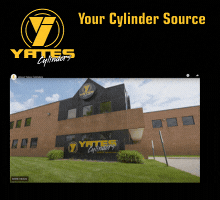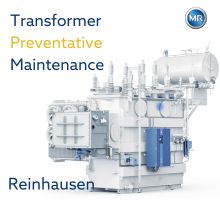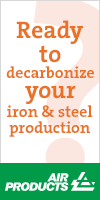EUROFER Says Industry Competitiveness at Risk from EU Energy, Climate Policy
01/21/2014 - EUROFER says the global competitiveness of EU industry is at stake as the EU Commission plans to adopt a package on future industry, energy and climate policy.
We all share the ambition to find an effective response to climate change, EUFOER says in a press release. However, there is nothing effective about the existing European climate policy which is damaging highly the competitiveness of European industry, forcing the shift of industrial production from the world-leading industries in Europe to much less efficient and polluting industries in other parts of the world. There is nothing effective about setting targets for emissions reductions without taking into account the technology limitations which confront individual industries. Steel in Europe for instance has reduced its emissions per tonne of production by 50% since the 1970s. It is now however at the limit of existing technology and it simply cannot meet the new targets being discussed by Europe. How does the European Commission intend to deal with this reality?
“Any target must safeguard the global competitiveness of Europe’s primary industries such as steel. These industries provide more than 4 million direct jobs and many more indirect working places. These jobs are not subsidized and therefore create real value for the European economy,” says EUROFER director general Gordon Moffat in view of the Commission package on the EU’s industrial, climate and energy policy up to 2030.
EUROFER is urging the Commission to clarify how it will safeguard the steel industry’s global competitiveness in the absence of breakthrough technologies for steel (as has been recognized by the Commission services themselves) which would allow it to reduce its emissions even further. Otherwise the package will be meaningless.
There are just three measures needed, EUFOER says:
Represented by EUROFER, the European steel industry represents the world leader in its sector, producing on average 170 million tonnes of steel per year with direct employment of 350 thousand highly skilled people. More than 500 steel production and processing sites in 24 EU member states provide direct and indirect employment for millions of European citizens.
“Any target must safeguard the global competitiveness of Europe’s primary industries such as steel. These industries provide more than 4 million direct jobs and many more indirect working places. These jobs are not subsidized and therefore create real value for the European economy,” says EUROFER director general Gordon Moffat in view of the Commission package on the EU’s industrial, climate and energy policy up to 2030.
EUROFER is urging the Commission to clarify how it will safeguard the steel industry’s global competitiveness in the absence of breakthrough technologies for steel (as has been recognized by the Commission services themselves) which would allow it to reduce its emissions even further. Otherwise the package will be meaningless.
There are just three measures needed, EUFOER says:
- The package must not result in direct or indirect costs for at least the most efficient industrial installations (best performers) in sectors exposed to global competition, as long as there is no international agreement on climate change which provides for similar constraints on our competitors. Until that time, steel needs 100% free emission permits for at least its best performers with no reduction and with full compensation (with free permits) of the CO2 costs passed through in electricity prices by the power sector.
- There must be a clear commitment and objective by the Commission to reduce the gap in industrial energy prices and costs between the EU and its main competitors, such as the U.S.
- The Commission must allow Member States to fully exempt energy intensive industries which are exposed to global competition, such as steel, from decarbonization surcharges — such as taxes, levies, including grid levies, and other costs relating to the support and development of low carbon generation — as long as competitors do not have to bear such surcharges.
Represented by EUROFER, the European steel industry represents the world leader in its sector, producing on average 170 million tonnes of steel per year with direct employment of 350 thousand highly skilled people. More than 500 steel production and processing sites in 24 EU member states provide direct and indirect employment for millions of European citizens.



-(220-x-200-px)-(130-x-130-px)-(220-x-200-px).jpg?lang=en-US&ext=.jpg)
.gif?width=200&height=200&mediaprotectionhash=ddb07947ad3b4ab959a83714461eccd5c6895f370695eb035a9ff7aa736f8ad9&ext=.gif)





